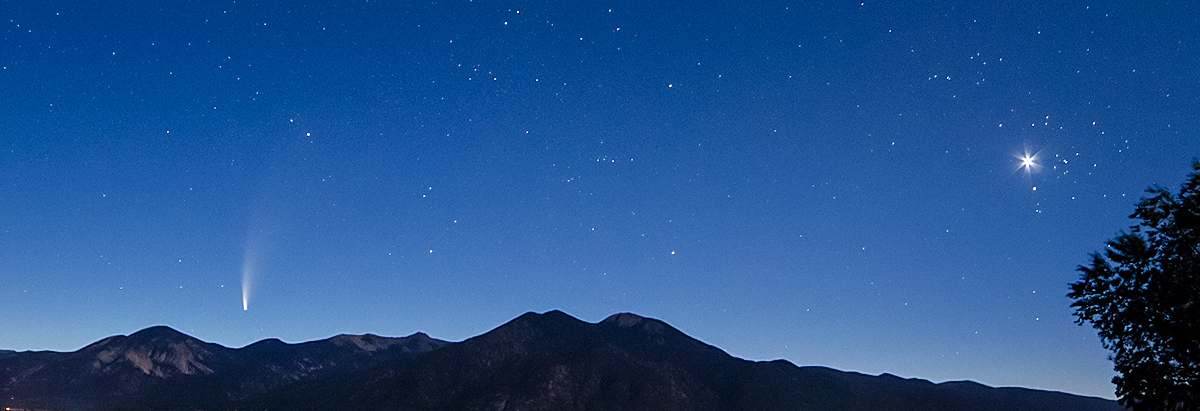
Welcome to taosastronomer.com!
offering
local "hands-on" observing
(visual and imaging) sessions and instruction
viewing and imaging from Rabbit Valley Observatory
a dark sky location on the mesa just west of Taos, NM
Image obtained 8-21/22-2015 through RVO's Megrez 80mm refractor with Orion field-flattener lens, using a Baader-modified Canon XSi DSLR and BackyardEOS image-acquisition software -- 16 selected and stacked 240-second luminance frames combined with multiple dark, flat and bias calibration frames shot at ISO 1600 and totaling more than 160 minutes (64 minutes effective luminance) were used to create this image; optics driven by the Losmandy G-11 mount equipped with Ovision's precision RA worm gear, guided with an Orion SSG3 Monochrome CCD camera using Maxim DL Pro and post-processed with DeepSkyStacker and Photoshop CS3.
Image of M20 and M21 for location/identification/description here. Above, it's to the right of M20 (Trifid Nebula), deeply imbedded in the Milky Way, beginning right on the edge of the image (oops!), description from Fred Espanek's AstroPixels site
[copyright Rabbit Valley Observatory/Willis Greiner, 2015 -- all rights reserved] |
(all content copyright 2015-2019 Willis Greiner Photography, all rights reserved)